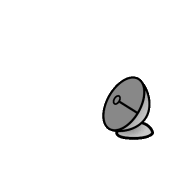
It is your first visit on the PicSat mission website, and you are lost? Here are a few hints on where to start, depending on what you are interested in.
Start by checking out the science goals page, the overview of the satellite, and the payload description. This should give you a good understanding of the mission, the way the satellite has been designed, and the scientific and technological goals. Once PicSat is in orbit, you can follow along and see Beta-Pictoris lightcurve being build over time, and try to detect any signs of the transit of the planet Beta-Pictoris b in front of its star, or any other transit phenomena!
Don't forget to follow PicSat on Twitter @IamPicSat.
You can see how the satellite is operated by looking at the telemetries and telecommands pages. You can get an idea of what the PicSat team is doing (or trying to do!) by clicking on the telemetries or telecommands of the day and checking their types.
The current status of the satellite and the payload can also be followed. These two pages show real raw data coming directly from the satellite beacons. Try to use our pass prediction tool to predict when PicSat will be passing over its ground station at the Observatoire de Paris in Meudon, France. This is when new data will be fed into these pages. Try to ignore the technical jargon, these are pages the PicSat team uses to check the health of the satellite. They are constantly evolving to fit the mission's needs.Needless to say: check the news!
That is cool! The PicSat team is really excited at the idea of collaborating with the amateur community to operate the satellite!
A number of pages containing information for you to understand the communication protocol of PicSat, as well as detailed instructions on how to build and operate your own reception station, are being prepared for anyone interested.
PicSat will be using 435.525 MHz for downlink and 145.910 MHz for uplink, BPSK modulation, with G3RUH scrambling.
We are in the early phase of the mission, and the satellite and its instrument are not fully commissionned yet. These are very busy times for us. We are doing the best we can to release these pages as soon as possible. In the meantime, check the news, and follow PicSat on Twitter @IamPicSat to stay up-to-date with what is going on!